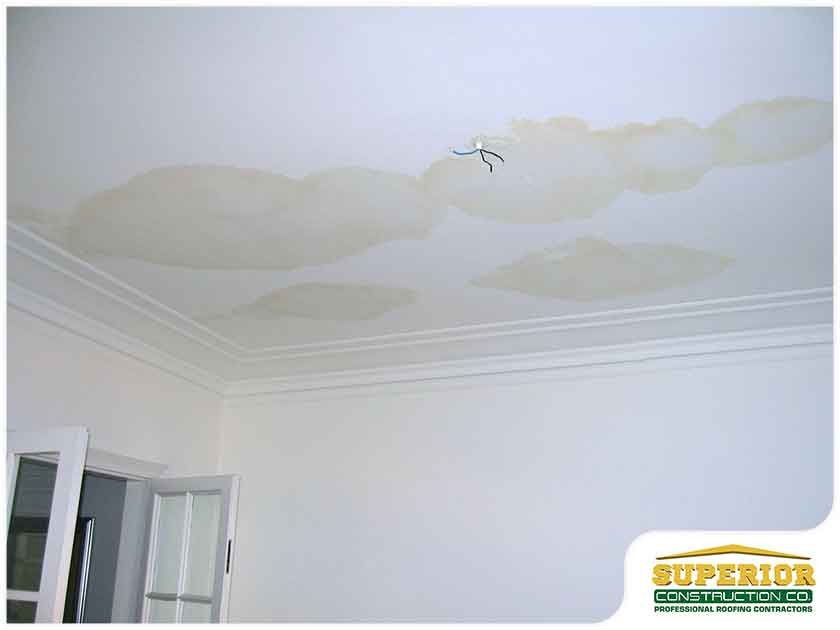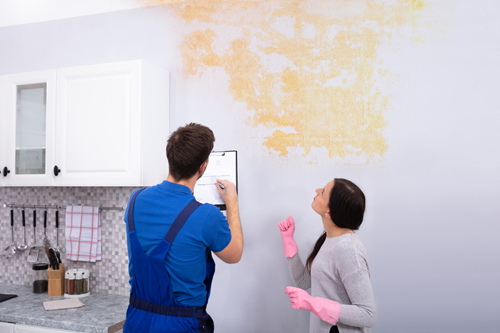Water Stains on Wall Surfaces: Inspecting and Addressing Approaches
Water Stains on Wall Surfaces: Inspecting and Addressing Approaches
Blog Article
Do you find yourself looking for resources around How to Remove Water Stains from Walls and Ceilings?

Water spots on wall surfaces are not positive to the eyes. Occasionally it appears almost unpreventable to experience water discolorations on wall surfaces in houses.
Property owners living in humid areas regularly deal with the worry of water discolorations on wall surfaces. With precise and well-rounded details on the reasons of water stains and also timely repair work processes, you will certainly always be a step in advance of such incidents.
3 Common Root Causes Of Water Stains on Wall Surfaces
Unlike common belief, water stains on wall surfaces do not always stem from bad structure products. There are a number of root causes of water spots on wall surfaces. These include:
Damp
When warm moist air meets dry cool air, it causes water beads to form on the wall surfaces of buildings. When there is vapor from cooking or showers, this occurs in kitchen areas and also bathrooms. The water droplets can tarnish the surrounding walls in these parts of your residence and spread to various other locations.
Moist or condensation influences the roofing system and also walls of structures. This causes them to appear darker than various other areas of the residence. When the wall is wet, it develops an ideal atmosphere for the growth of fungis as well as microorganisms. These might have negative impacts on health, such as allergies as well as respiratory system conditions.
Poor Drain
When making a structure strategy, it is vital to make sure ample drain. This will certainly prevent water from seeping into the walls. Where the drain system is blocked or missing, underground moisture accumulates. This web links to extreme moisture that you observe on the wall surfaces of your building.
The leading reason of wet wall surfaces, in this case, can be a bad drain system. It can likewise be because of inadequate monitoring of sewer pipelines that go through the building.
Pipeline Leaks
A lot of houses have a network of water pipes within the walls. This ensures that the pipelines are faraway from the reach of harmful rats. It always enhances the practicality of such pipes, as there is little oxygen within the wall surfaces. This prevents corrosion.
A downside to this is that water leak affects the wall surfaces of the structure as well as causes extensive damage. A telltale sign of malfunctioning pipes is the appearance of a water tarnish on the wall.
Pro Pointer
A houseplant in your house additionally boosts its moisture. If the residence is currently moist, you may desire to introduce houseplants with marginal transpiration. An example of ideal houseplants is succulents.
Water Discolorations on Wall: Repair Tips
Home owners would normally want a quick fix when dealing with water stains. Yet, they would soon realize this is detrimental as the water spots reoccur. Below are a few practical suggestions that will lead you in the fixing of water discolorations on walls:
Final thought
No one wants to have water spots on walls in their house, it can happen to the best of us. This post gives you leverage, as you currently know exactly how to handle this mishap if it does occur.
It is constantly best to hire professional solutions to help deal with the damages in your home.
Often it appears almost unavoidable to experience water stains on wall surfaces in houses.
Contrary to popular belief, water discolorations on wall surfaces do not constantly stem from bad structure products. There are a number of causes of water discolorations on wall surfaces. The water beads can discolor the surrounding wall surfaces in these parts of your house and spread to other locations.
Below are a few handy suggestions that will guide you in the repair of water spots on wall surfaces:
How to Remove Water Stains From Your Walls Without Repainting
The easy way to get water stains off walls
Water stains aren’t going to appear on tile; they need a more absorbent surface, which is why they show up on bare walls. Since your walls are probably painted, this presents a problem: How can you wash a wall without damaging it and risk needing to repait the entire room?
According to Igloo Surfaces, you should start gently and only increase the intensity of your cleaning methods if basic remedies don’t get the job done. Start with a simple solution of dish soap and warm water, at a ratio of about one to two. Use a cloth dipped in the mixture to apply the soapy water to your stain. Gently rub it in from the top down, then rinse with plain water and dry thoroughly with a hair dryer on a cool setting.
If that doesn’t work, fill a spray bottle with a mixture of vinegar, lemon juice, and baking soda. Shake it up and spray it on the stain. Leave it for about an hour, then use a damp cloth to rub it away. You may have to repeat this process a few times to get the stain all the way out, so do this when you have time for multiple hour-long soaking intervals.
How to get water stains out of wood
Maybe you have wood paneling or cabinets that are looking grody from water stains too, whether in your kitchen or bathroom. Per Better Homes and Gardens, you have a few options for removing water marks on your wooden surfaces.
You can let mayonnaise sit on your stain overnight, then wipe it away in the morning and polish your wood afterward. You can also mix equal parts vinegar and olive oil and apply to the stain with a cloth, wiping in the direction of the grain until the stain disappears. Afterward, wipe the surface down with a clean, dry cloth. Try placing an iron on a low heat setting over a cloth on top of the stain. Press it down for a few seconds and remove it to see if the stain is letting up, then try again until you’re satisfied. (Be advised that this works best for still-damp stains.) https://lifehacker.com/how-to-remove-water-stains-from-your-walls-without-repa-1849742925

Do you like reading up on ? Put a remark directly below. We'd be interested to listen to your opinion about this entry. In hopes to see you back again before long. Enjoyed our write up? Please share it. Help another person find it. I praise you for your time. Don't hesitate to come by our website back soon.
Superior service awaits. Report this page